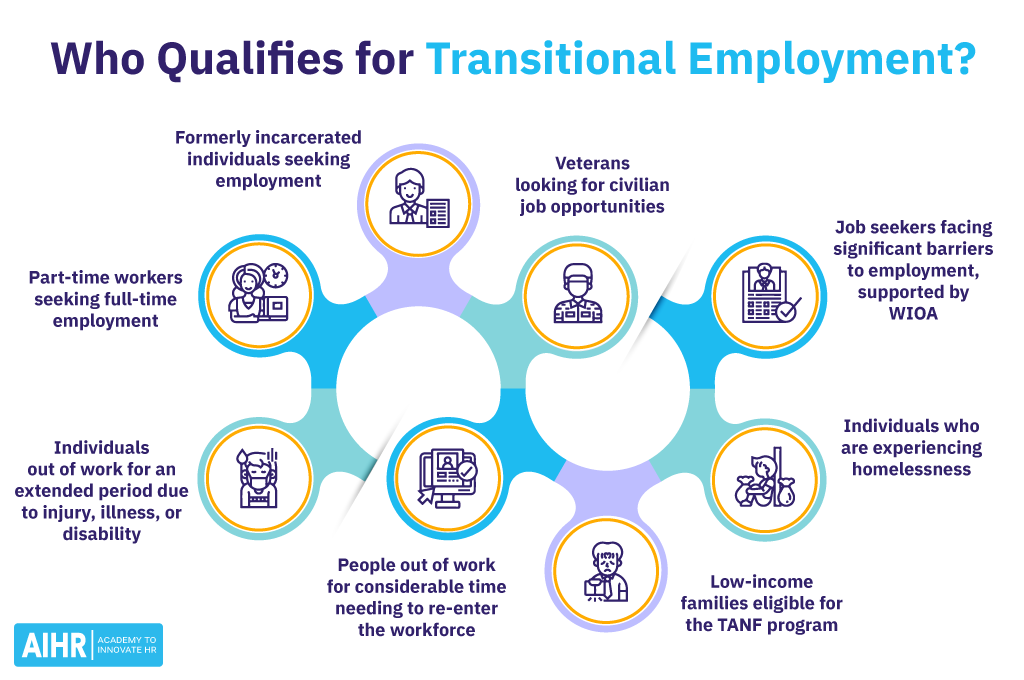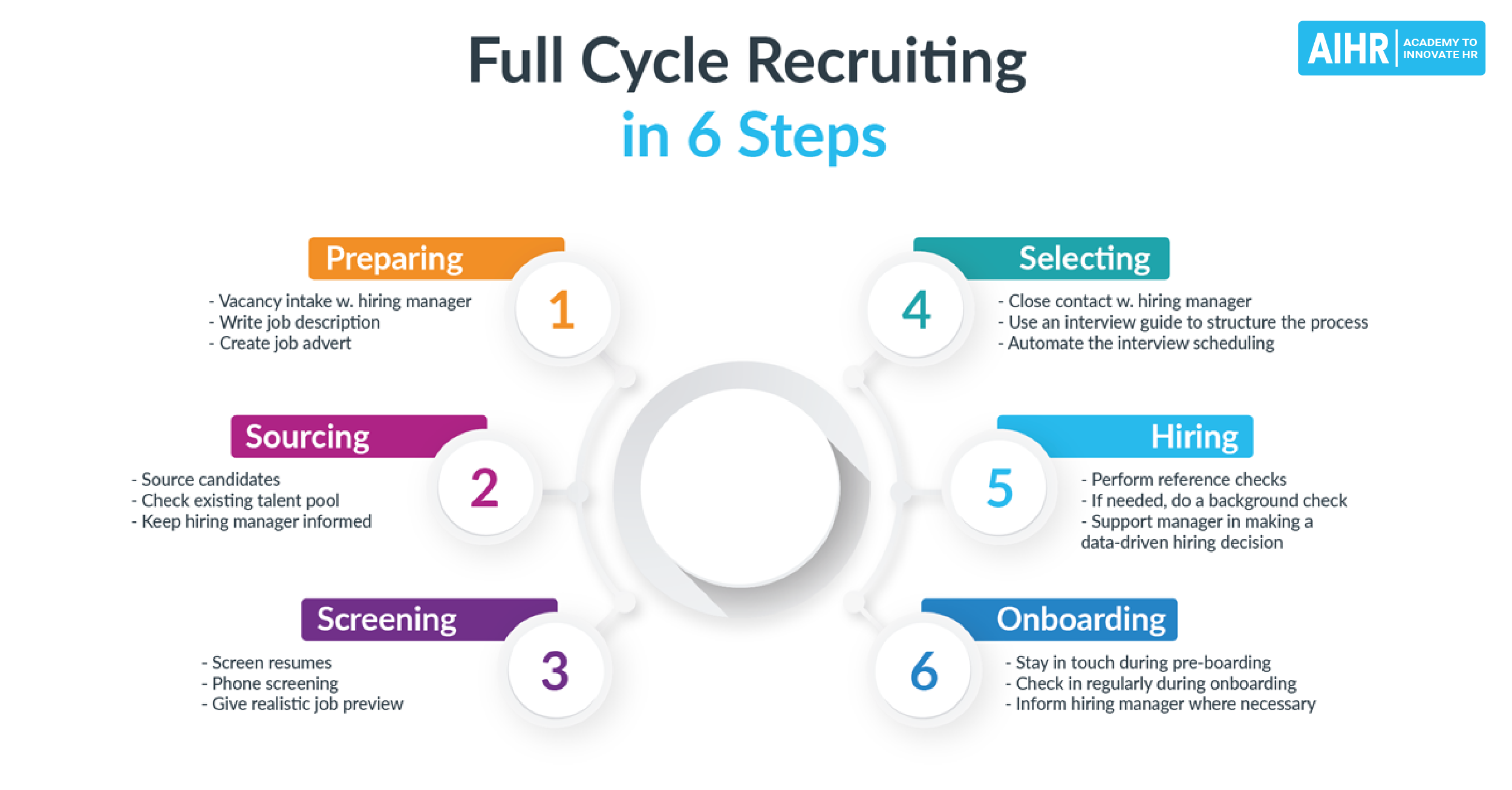Transitional Employment
What is transitional employment?
Transitional employment refers to temporary job placements designed to help individuals gain or regain the skills, confidence, and experience needed to enter or reenter the workforce.
Transitional employment programs often provide not only a job but also support services such as job training, resume building, interview preparation, and sometimes counseling or mental health services. The duration of transitional employment can vary but typically lasts from a few months up to two years, depending on the program’s structure and the individual’s progress.
Who qualifies for transitional employment?
Transitional employment programs are designed to support a wide range of individuals who may face difficulties securing permanent employment. While the specific criteria for qualification can vary depending on the program, generally, these programs target:
- Individuals out of work for an extended period due to injury, illness, or disability
- Part-time employees seeking full-time employment
- People who were formerly incarcerated
- Veterans transitioning to civilian employment
- People who have been out of work for a significant period and struggle to reenter the workforce
- Low-income individuals and families who qualify for Temporary Assistance for Needy Families (TANF), a federal anti-poverty program
- Individuals who are experiencing homelessness
- Participants under the Workforce Innovation and Opportunity Act (WIOA), which aims to support job seekers with significant barriers to employment, including those mentioned above.

Benefits of offering transitional employment
Here’s a breakdown of some key benefits of offering transitional employment:
- Access to a broader talent pool of candidates: Employers can tap into a diverse pool of candidates who may possess a wide range of skills and experiences beneficial to the organization but might not be available through traditional employment channels.
- Community and social responsibility: Providing transitional employment opportunities can improve the company’s reputation as a socially responsible employer committed to supporting diverse employment needs.
- Improved employee morale: Demonstrating a commitment to helping individuals in transition can boost the morale of existing employees by creating a culture of inclusivity and compassion.
- Tax incentives: In some jurisdictions, employers may be eligible for tax credits or other incentives for hiring individuals from certain groups, such as veterans, individuals with disabilities, or those who have been unemployed for an extended period.
Examples of transitional employment jobs
Transitional employment jobs typically involve light-duty or less demanding roles that serve as an entry point back into the workforce. Some examples include:
- Administrative assistant roles, focusing on basic clerical tasks
- Customer service positions in a controlled, supportive environment
- Maintenance or custodial roles with manageable physical demands
- Entry-level tech support, providing guided assistance and supervision.
HR tip
Develop a mentorship program within your transitional employment strategy to pair transitioning employees with experienced mentors. This approach promotes knowledge transfer, builds support networks, and enhances engagement, fostering a positive work environment and aiding in the seamless integration of employees into new roles or projects.
Examples of transitional employment programs
- Goodwill industries: Goodwill’s employment programs offer job training, education, and employment services to people with disabilities or other barriers to employment. Participants work in Goodwill stores and donation centers, gaining retail and customer service experience.
- The Doe Fund’s Ready, Willing & Able Program: This program provides paid work, training, and support services to homeless individuals, many of whom have histories of incarceration or substance abuse. Participants work in community improvement projects, such as street cleaning and maintenance, while receiving vocational training and job placement assistance.
- Project SEARCH: Focused on young adults with intellectual and developmental disabilities, Project SEARCH provides internship experiences in healthcare, government, and business settings. The goal is to help participants gain employable skills and transition into competitive employment.
Transitional employment vs. supported employment
Transitional and supported employment are two models designed to assist individuals in entering or reentering the workforce. While both aim to improve employment outcomes for these individuals, they operate under different frameworks and principles:
Objective
To bridge the gap between unemployment and permanent employment.
To enable individuals with disabilities to work in integrated settings.
Target audience
Broad, including those with employment barriers due to various reasons.
Specifically aimed at individuals with disabilities.
Duration
Typically temporary, ranging from a few months to two years.
Indefinite, with ongoing support.
Employment type
Often part-time or temporary roles designed as stepping stones.
Permanent positions tailored to the individual’s abilities.
Support level
Time-limited support focusing on skill-building and employment readiness.
Continuous, individualized support to maintain employment.
How HR can develop a transitional employment program
Developing a transitional employment program involves a structured approach to ensure it meets the needs of both the organization and the program participants:
- Step 1. Identify objectives and scope: Determine what the program aims to achieve, such as supporting community employment, aiding specific groups, or addressing skill shortages.
- Step 2. Design the program structure: Based on the objectives and needs assessment, develop the program’s key components. This includes designing training and development sessions, mentorship opportunities, career counseling, and job placement services tailored to support employees through their specific transitions.
- Step 3. Provide resources and support: The availability of resources and support mechanisms is crucial to the program’s success. Implement targeted training sessions and workshops to bridge skill gaps, and establish mentorship or coaching arrangements to offer guidance and support.
- Step 4. Implement the program: Consider launching a pilot phase to test the program with a small group of employees, allowing for adjustments based on initial feedback. Effective communication is key to the program’s success, so ensure the objectives, benefits, and participation details are clearly communicated to the entire workforce.
- Step 5: Evaluate and adjust: Set up a system to monitor the program’s progress and evaluate its impact, using metrics such as participant satisfaction, skill improvement, and successful transitions. Solicit ongoing feedback from participants to identify areas for improvement. Be prepared to adjust the program based on this feedback and evolving organizational needs, ensuring it remains relevant and effective.
By following these steps, HR can develop a transitional employment program that not only aids individuals facing employment barriers but also enhances the organization’s social impact and talent pipeline.







